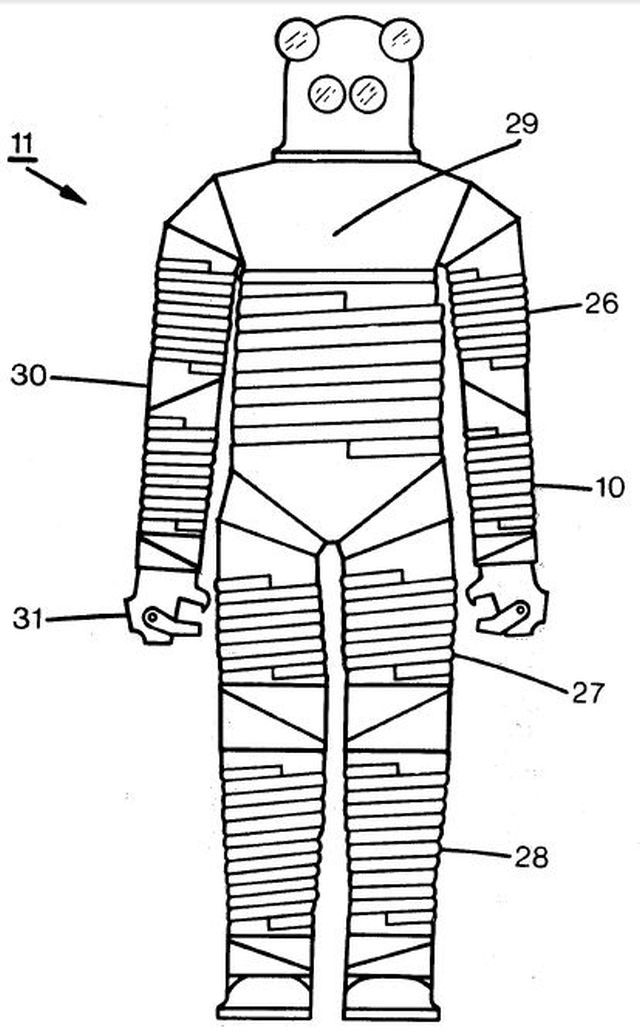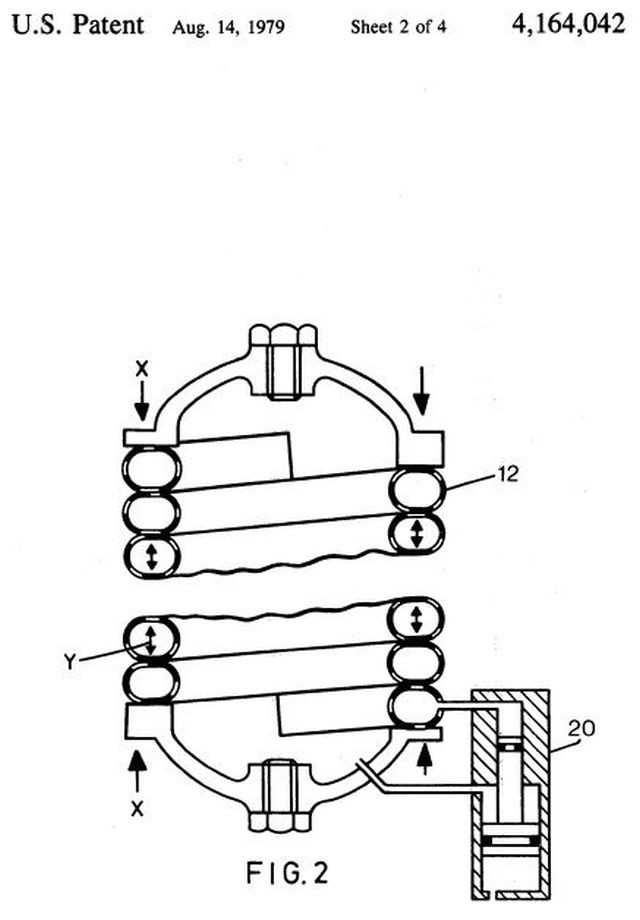Patent name: Wall structures such as for use in deep diving apparatus
Publication number US4164042 A
Publication type Grant
Application number US 05/851,416
Publication date Aug 14, 1979
Filing date Nov 14, 1977
Priority date Nov 18, 1976
Also published as CA1060500A1, CA1098651A1, DE2751344A1, DE2751345A1, US4167792
Inventors Alistair L. Carnegie
Original Assignee Normalair-Garrett (Holdings) Limited
Abstract
A wall structure for use in forming part of an enclosure that is subject to high pressure differential between its external and internal environments comprises tubing that has been flattened over two diametrically opposed areas and helically wound so as to be contiguous along the flattened areas. The interior of the tubing is filled with a substantially incompressible flexible medium. Means are provided for pressurizing the flexible medium, at least during periods of operation when the enclosure is subjected to a substantial pressure difference between its external and internal environments, so as to balance some of the loads acting on the wall structure due to the pressure differential. The wall structure is particularly suitable for use in forming parts of a deep diving suit or other deep diving and submersible enclosures.
Description
This invention relates to a wall structure for use in forming at least a part of an enclosure that is subjected to high external pressure relative to its internal pressure. The invention is particularly, although not exclusively, concerned with a wall structure of particular utility in the construction of deep diving enclosures that provide an environment at normal or near normal atmospheric pressure. Such deep diving enclosures include diving suits, diving chambers and other occupant enclosure devices, as well as crewless enclosure devices falling within the term "submersibles." A wall structure in accordance with the invention is also suited for use in forming at least a part of an enclosure for containing vacuum conditions.
At depths below 1,200 feet a diver needs almost all his energy to breathe, and consequently his work effort diminishes with depth. Furthermore, long-term operations at pressure create several immediate problems, such as rescue in the event of injury, and the long-term effects under such conditions are still not fully known. A diving suit capable of providing internal pressure equivalent to one atmosphere would enable a diver to carry out a high percentage of his normal duties at depths below 1,200 feet, whilst reducing many of the dangers that are at present inherent.
It is essential to produce a one atmosphere diving suit with a good strength to weight ratio. This is particularly true of the limb portions of the suit, since having commenced movement of a limb portion, such as an arm, the momentum of the moving mass of the limb tends to cause it to move beyond its objective, or overshoot, thus making the accomplishment of intricate tasks difficult, time-consuming, and tiring if moved by the physical effort of the diver. In present-day diving suits high strength to weight ratios are obtained by the use of magnesium with, however, the constant risk that in an undersea environment any break in the protective treatment of the metal will lead to corrosion followed by rapid disintegration.
It is an object of the present invention to provide a wall structure that is suited for use in forming at least a part of an enclosure which is subject to high pressure differential between its external and internal environments, whilst being light in weight and so having a high strength to weight ratio without incorporating the risks associated with the use of magnesium when used in a corrosive environment.
Accordingly, the invention provides a wall structure for forming at least a part of an enclosure, said wall structure comprising tubing that is flattened over two diametrically opposed areas and is helically wound so as to be contiguous along the flattened areas, the wall structure being sealed along the contiguous flattened areas of the tubing, the interior of the tubing being filled with a substantially incompressible flexible medium that is pressurised at least during periods of operation when the enclosure is subjected to a substantial pressure differential between its external and internal environments.
The said flexible medium may be a liquid or a solid, that in use becomes pressurised by the compressive action of pressure that is external to the enclosure.
Where the medium is a liquid it may be further pressurised in use by means of a pressure intensifier that is responsive to the external ambient pressure.
Whilst the tubing may be of any suitable material, stainless steel is preferred. The wall structure may be provided with a protected surface, for instance by being coated with a rubber-filled polyurethane lacquer.
A wall structure constructed in accordance with the invention may form a complete hollow body or it may be used to form one or more hollow portions of a hollow body and may have various configurations ranging from a tube to a sphere, e.g. as represented, respectively, by a limb portion of a diving suit and by a bathysphere.
See other early Underwater Robots here.

